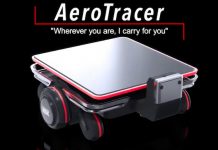- Schaeffler and VDL plan to jointly develop and produce a new generation of self-driving electric shuttles for public transport
- Mobileye to provide the shuttle vehicles with autonomous driving systems for SAE level 4
- First demonstrator and all relevant automotive electrification and steering technology will be showcased at IAA Mobility 2023 by Schaeffler (hall B3, booth B40) and VDL Groep (hall B3, booth B21)

Photo: VDL Groep, Schaeffler
Schaeffler and VDL Groep are jointly exploring the development and production of a new generation of self-driving shuttles for public transport. The two family-owned companies will be showcasing a first demonstrator, as well as all relevant automotive electrification and steering technology at the IAA Mobility show in Munich. The initiators intend to bring together their technological competencies and expertise in systems engineering, development, production, and public transport. For this progressive and innovative mobility concept, Schaeffler and VDL Groep will cooperate with Mobileye who will provide the shuttle vehicles with autonomous driving systems. The two partners are currently in advanced negotiations with public transport authorities and operators to start pilot projects. According to the roadmap, testing for the vehicles on the streets will most likely be possible starting in 2025.

Partners for new mobility ecosystems
Around the globe, the concept of mobility is currently being reinvented. Many metropolitan areas are supplementing their mobility offering to alternative transport concepts to provide a mobility that is sustainable and easily accessible. Public transport operators are increasingly exploring autonomous driving solutions, allowing for increasing traffic volumes even considering a shortage of drivers. Especially in off-peak hours, larger vehicles would progressively be replaced by smaller, self-driving vehicles based on on-demand services that are a perfect solution for making public transport locally emission-free and low-noise. The self-driving shuttles can be ordered by consumers via an app, and are set to change public transport over the next several years. Demand for self-driving shuttle services is expected to take off in the coming years, especially in many major cities in Europe, North America, and parts of Asia by the end of this century. The envisaged strategic cooperation between Schaeffler and VDL underlines the importance of getting involved in these developments at an early stage. Together, both companies aim to accelerate the development of shuttle vehicles that can be manufactured on a commercial scale.
Klaus Rosenfeld, CEO of Schaeffler AG, says: “Self-driving shuttle vehicles will become integral elements of modern mobility ecosystems. They will bring people safely, quickly, and easily from A to B and increase accessibility to mobility for everyone living in cities and rural areas. We at Schaeffler want to support this development with best-in class systems engineering, as well as innovative automotive technology in a sustainable manner. This goal is best realised with strong partners. We are more than happy to team up with VDL Groep and Mobileye.”

Photos: Schaeffler (SevenM)
Willem van der Leegte, President and CEO of VDL Groep says: “Autonomous shuttles are going to play an important role in our future mobility needs. This vehicle concept fits seamlessly into our broad mobility solution covering design, electrification, connectivity, autonomy, and services. Of course, this planned cooperation is also a fantastic opportunity to pioneer and innovate with our esteemed partners Schaeffler and Mobileye.”
Level 4: self-driving without driver
VDL Groep leads the way as an innovator in areas such as bus and car manufacturing and is the European frontrunner in the electrification of heavy duty vehicles. Schaeffler is a worldwide leading automotive supplier of systems and components for electrified powertrains, as well as innovative steering systems. The company has introduced a so-called rolling chassis, which combines a fully electric powertrain, steer-by-wire system, and battery in a modular solution. The Mobileye Drive platform designed for shuttle vehicles enables autonomous driving using purpose-built EyeQ processors, redundant sensor systems of surround cameras, and lidar or radar sensing, as well as mapping solutions. Johann Jungwirth, Senior Vice President Autonomous Vehicles at Mobileye: “The full potential of autonomous mobility to transform our communities for the better can only be reached if the technologies are safe, accessible, and scalable. Working with Schaeffler and VDL Groep, we have the right strategy and teams to make mobility-as-a-service a reality in the very near future.”
Germany is planned to be the first country where the newly developed and manufactured shuttles will operate, benefitting from the fact of being the first country in Europe which approved SAE level 4 for use on public roads.
Industrialisation: production volume depends on achievable sales
Schaeffler and VDL intend to develop and build the shuttles for public transport operators who will be operating the vehicles within a comprehensive ecosystem. The companies have already started negotiations with operators to acquire pilot projects with the intention to prove the concept and to set up a scalable ecosystem with open interfaces. The target production volumes will depend on achievable sales, but they are projected to produce some thousands of vehicles per year starting in 2030. Production is planned to take place at VDL’s Mobility Innovation Centre in Born (Netherlands).
Schaeffler and VDL Groep autonomous shuttle specifications:
- Seats: nine seats (six seats fixed, three seats flexible)
- Payload: around 1,000 kg
- Dimensions: 5 metres long, 2.2 metres wide, 2.8 metres high, weighing about 5,000 kg
- Indoor monitoring system in direct contact to a control room
- Two deeply integrated independent sensing systems: one camera-based and one radar or lidar-based
- Large doors and low entry step, wheelchair accessible
- Maximum speed: 70 km/hour
- Range: over 350 km per day, and over 100 km on one battery charge
Contact:
Laura McKenzie
UK Communications & Branding Manager
Schaeffler (UK) Ltd
Unit 308, Fort Dunlop, Fort Parkway
Birmingham
B24 9FD
[email protected]






